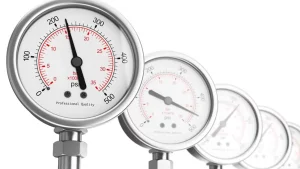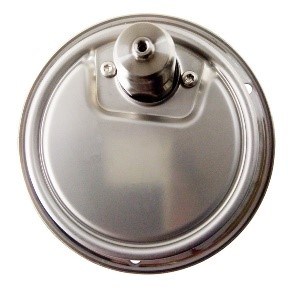Introduction
Pressure gauges are essential instruments used across various industries to measure and monitor the pressure of gases or liquids in systems. They ensure operational safety, efficiency, and accuracy in processes ranging from manufacturing to oil and gas. This article explores the types, working principles, and applications of pressure gauges.
Types of Pressure Gauges
- Bourdon Tube Gauges – The most common type, utilizing a curved tube that straightens under pressure, moving a pointer to indicate pressure levels.
- Diaphragm Gauges – Use a flexible diaphragm that deflects under pressure, ideal for corrosive or viscous media.
- Bellows Gauges – Employ a cylindrical bellows element that expands or contracts with pressure changes, suitable for low-pressure measurements.
- Digital Pressure Gauges – Provide precise electronic readings and often include additional features like data logging.
Working Principle
Pressure gauges operate by converting the mechanical deformation caused by pressure into a readable measurement. For example, in a Bourdon tube gauge, pressure causes the tube to deform, which moves a gear mechanism connected to a needle on a calibrated scale.
Applications
- Oil & Gas: Monitoring pipeline and refinery pressures.
- HVAC Systems: Ensuring proper refrigerant pressure.
- Water Treatment: Controlling pump and filtration systems.
- Aerospace: Measuring hydraulic and fuel pressures in aircraft.
Conclusion
Pressure gauges play a critical role in maintaining system integrity and safety. Selecting the right type for specific applications ensures accuracy and longevity, preventing equipment failure and hazards. As technology advances, digital and smart pressure gauges are becoming increasingly prevalent, offering enhanced precision and connectivity.



